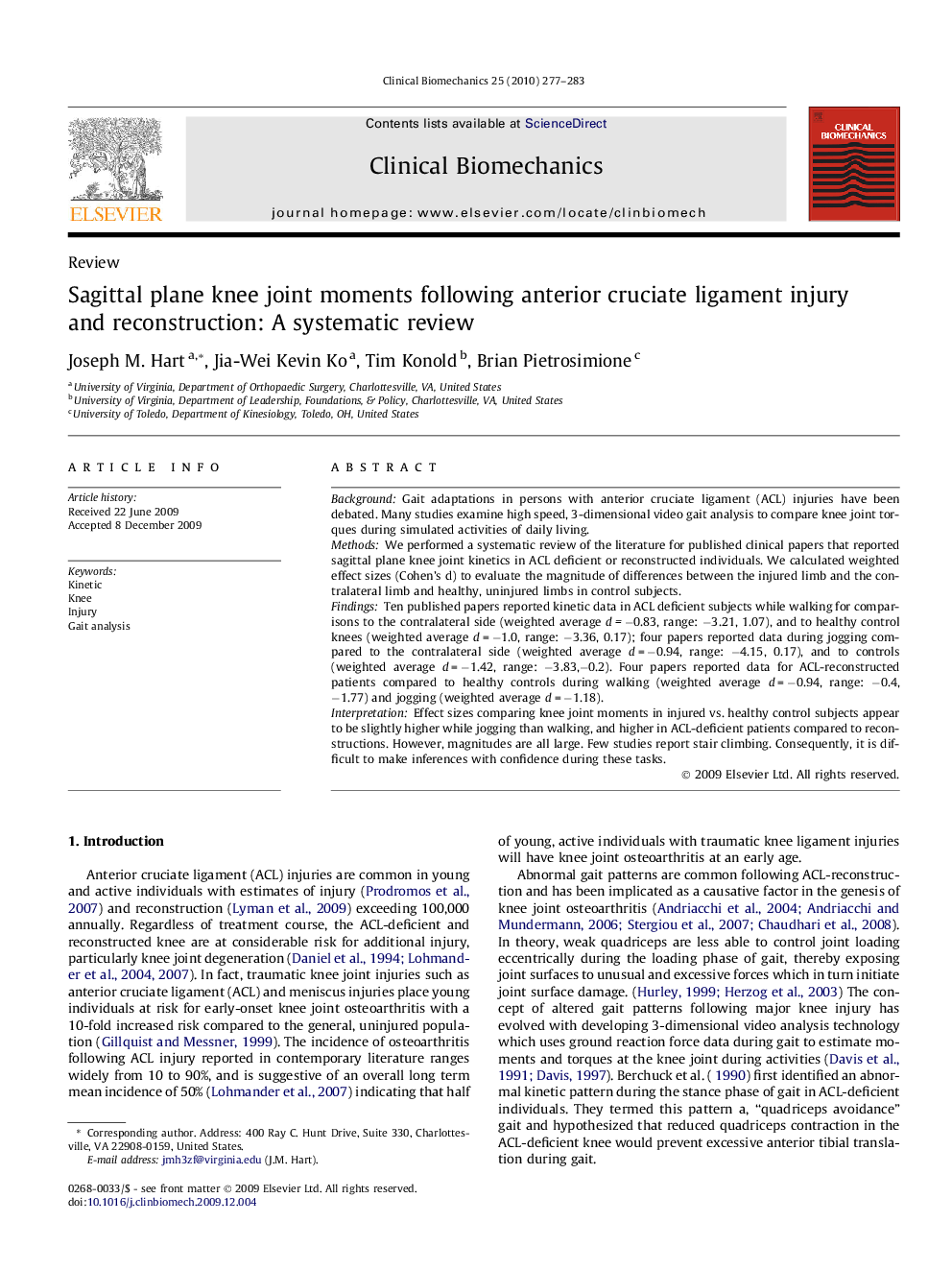| Article ID | Journal | Published Year | Pages | File Type |
|---|---|---|---|---|
| 4050610 | Clinical Biomechanics | 2010 | 7 Pages |
BackgroundGait adaptations in persons with anterior cruciate ligament (ACL) injuries have been debated. Many studies examine high speed, 3-dimensional video gait analysis to compare knee joint torques during simulated activities of daily living.MethodsWe performed a systematic review of the literature for published clinical papers that reported sagittal plane knee joint kinetics in ACL deficient or reconstructed individuals. We calculated weighted effect sizes (Cohen’s d) to evaluate the magnitude of differences between the injured limb and the contralateral limb and healthy, uninjured limbs in control subjects.FindingsTen published papers reported kinetic data in ACL deficient subjects while walking for comparisons to the contralateral side (weighted average d = −0.83, range: −3.21, 1.07), and to healthy control knees (weighted average d = −1.0, range: −3.36, 0.17); four papers reported data during jogging compared to the contralateral side (weighted average d = −0.94, range: −4.15, 0.17), and to controls (weighted average d = −1.42, range: −3.83,−0.2). Four papers reported data for ACL-reconstructed patients compared to healthy controls during walking (weighted average d = −0.94, range: −0.4, −1.77) and jogging (weighted average d = −1.18).InterpretationEffect sizes comparing knee joint moments in injured vs. healthy control subjects appear to be slightly higher while jogging than walking, and higher in ACL-deficient patients compared to reconstructions. However, magnitudes are all large. Few studies report stair climbing. Consequently, it is difficult to make inferences with confidence during these tasks.
